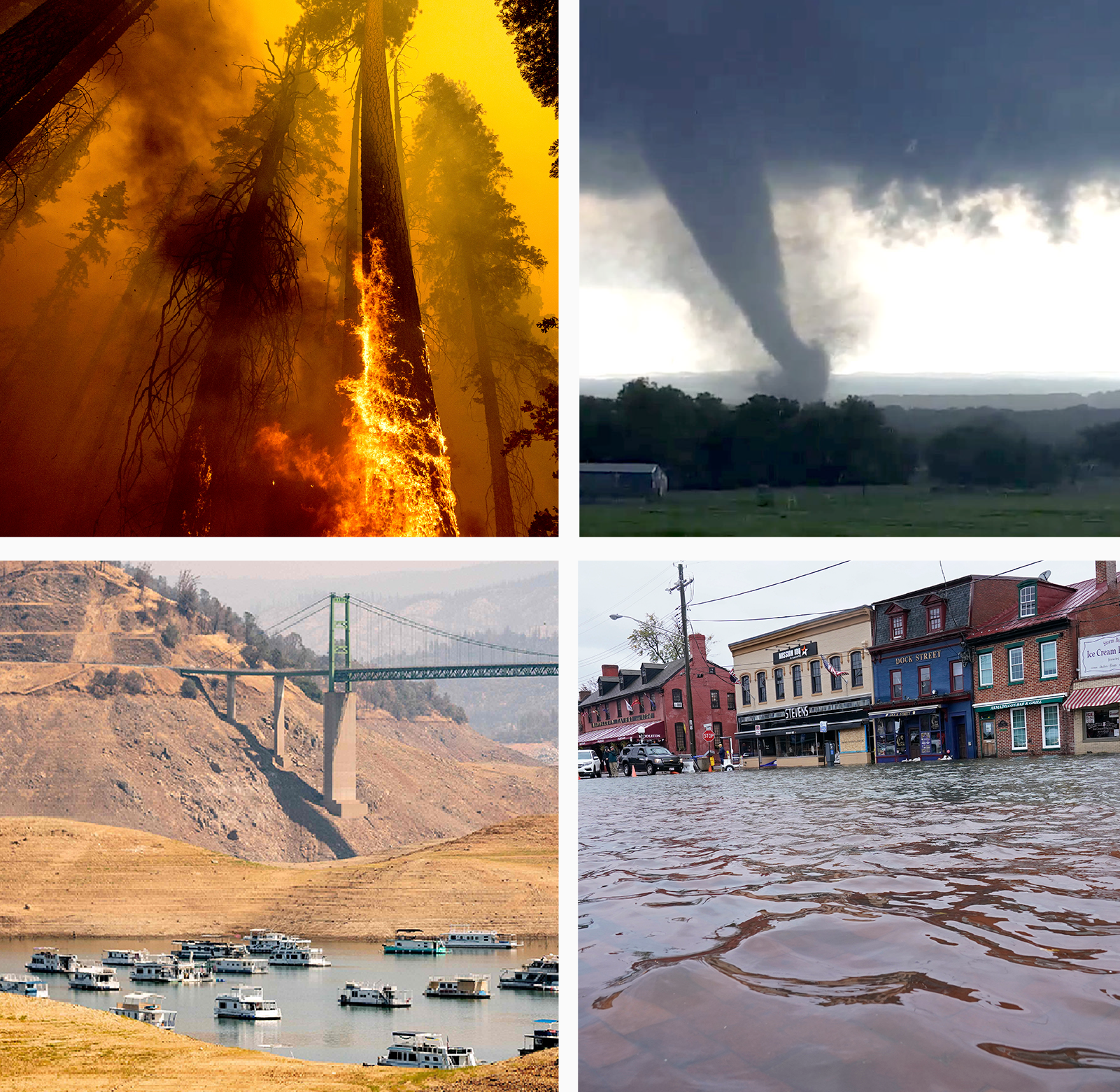GREENVILLE, Calif. — The largest wildfire in California this year "catastrophically destroyed" the gold rush town of Greenville on Wednesday night, then forced the closure of a national park on Thursday while also chasing residents from their homes across the northern Sierra Nevada region.
The Dixie Fire, now the sixth-largest blaze in the state's modern history, has been burning for three weeks and spreading in Northern California's Plumas, Butte, Lassen and Tehama counties. The blaze has already destroyed at least 67 structures, though fire crews have yet to include the damage in Greenville.
Firefighters were bracing for another explosive run of flames Thursday, fueled by strong wind gusts and bone dry vegetation caused by the drought. Red flag weather conditions of high heat, low humidity and a gusty afternoon, with winds as strong as 35 mph, were expected to be a continued threat through Thursday night.
The trees, grass and brush are so dry that “if an ember lands, you’re virtually guaranteed to start a new fire,” fire spokesman Mitch Matlow said.
Already Thursday, the hazardous conditions caused by the blaze forced the closure of the Lassen Volcanic National Park, a more than 100,000-acre park about 130 miles north of Sacramento near the southern end of the Cascade Mountains.
Park staff prepared structures in the area over the past few days, but that may not be enough to save them.
'Everything's been burned':Firefighters witness destruction of historic Greenville in Northern California
What we know:Dixie Fire at 320,000 acres, forces new evacuations in Plumas County
“The fire is moving so fast and so hot, it’s an extremely dangerous situation,” park spokesman Kevin Sweeney said. It’s too early to tell how many acres have burned, he added.
On Wednesday, the fire made its way through Greenville, leaving a trail of destruction in a downtown area that features historic buildings built in the 1800s and throughout the 1949 gold rush. A gas station, hotel and bar were among many fixtures destroyed by flames.
Dan Kearns, a volunteer firefighter, said the winds came up strong Wednesday afternoon and blew the Dixie Fire into town under the type of deadly conditions that have in recent years caused widespread damage in California communities, including Paradise, Redding and Shasta County.
"I'm not going to say total (destruction) because not every structure is gone. But the town it's catastrophically destroyed," Kearns said.
Fire crews from multiple agencies remained in the area into Thursday afternoon, putting out spot fires as thick clouds of smoke and ash floated through the air.
Most of the buildings in the downtown area had been destroyed, including the town library and Indian Valley Community Center. Structures that remained included Greenville High School, a Plumas Bank branch, a Dollar General store and a grocery store.
The historic Bransford & McIntyre General Store, standing since 1881 after a fire destroyed the original 1870s building, was destroyed. So was a small café, where only the metal chairs and an oven were left upright in the burned remains.
“We lost Greenville tonight,” U.S. Rep. Doug LaMalfa, who represents the area, said in an emotional Facebook video Wednesday. “There’s just no words.”
As the fire’s north and eastern sides exploded Wednesday, the Plumas County Sheriff’s Office issued a Facebook posting warning the town’s approximately 800 residents: “You are in imminent danger and you MUST leave now!”
Firefighters worked to quickly evacuate any residents still in the area but several of them were met with gun-toting residents not wanting to leave.
"Talking about the people out there dealing with evacuations ... we have firefighters that are getting guns pulled out on them because people don’t want to evacuate," operations sections chief Jake Cagle said.
Cagle said while he understands it's difficult for property owners, refusing to leave can put a strain on fire resources.
"When our resources come in and they have to load up people in their fire vehicles, that takes us away from fighting the fire," Cagle said.
The growing blaze, which broke out July 21, has burned through more than 322,502 acres, an area larger than the city of Los Angeles. The cause of the blaze is under investigation but Pacific Gas & Electric has said it may have been sparked when a tree fell on one of its power lines.
An additional 4,000 people were ordered to evacuate Wednesday, bringing nearly 26,500 people in several counties under evacuation orders.

'Going to be a long haul':Massive Dixie Fire merges with Fly Fire, tears through small town as California burns
The blaze surpassed last August's North Complex, which burned 318,935 acres and destroyed 2,352 buildings in Butte, Plumas and Yuba counties, according to Cal Fire records. Fifteen people died as a result of the North Complex.
Ken Donnell left Greenville on Wednesday, thinking he’d be back after a quick errand in a nearby town. He was unable to return as the flames swept through. All he has now are the clothes on his back and his old pickup truck, he said. He’s pretty sure his office and house, with the go-bag he had prepared, is gone.
Donnell remembered assisting victims of 2018’s devastating Camp Fire, in which about 100 friends lost their homes. “Now I have a thousand friends lose their home in a day,” he said. “We’re all stunned.”
About 100 miles to the south, officials said between 35 and 40 homes and other structures burned in the fast-moving River Fire that broke out Wednesday near Colfax, a town of about 2,000. Within hours it ripped through nearly 4 square miles (10 square kilometers) of dry brush and trees. There was no containment and about 6,000 people were under evacuation orders across Placer and Nevada counties, according to Cal Fire.
And about 150 miles to the west of the Dixie Fire, the lightning-sparked McFarland Fire threatened remote homes along the Trinity River in the Shasta-Trinity National Forest. The fire was only 7% contained after burning through nearly 33 square miles of drought-stricken vegetation.
Similar risky weather was expected across Southern California, where heat advisories and warnings were issued for interior valleys, mountains and deserts for much of the week.
Heat waves and historic drought tied to climate change have made wildfires harder to fight in America’s West. Scientists say climate change has made the region much warmer and drier in the past 30 years and will continue to make weather more extreme and wildfires more frequent and destructive.
More than 20,000 firefighters and support personnel were battling 97 large, active wildfires covering 2,919 square miles in 13 U.S. states, the National Interagency Fire Center said.
Contributing: The Associated Press
Source link











